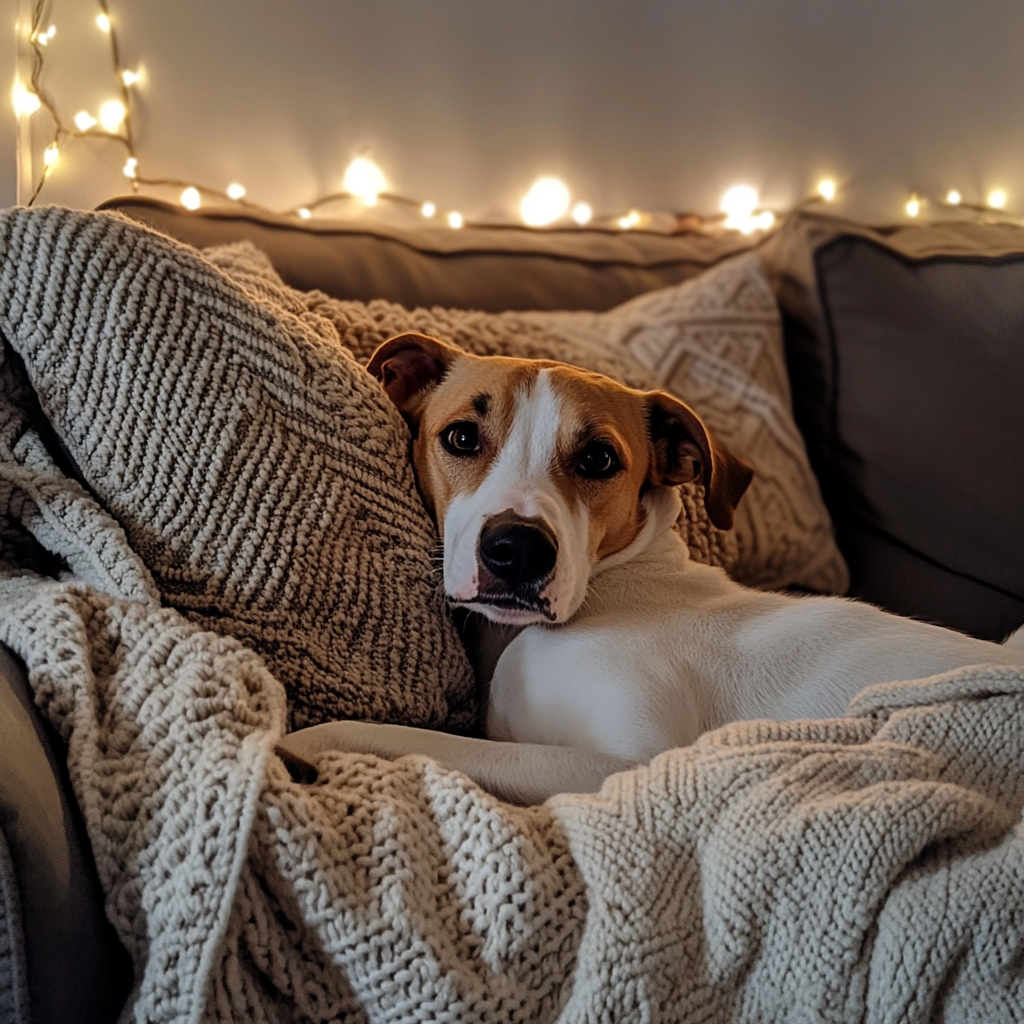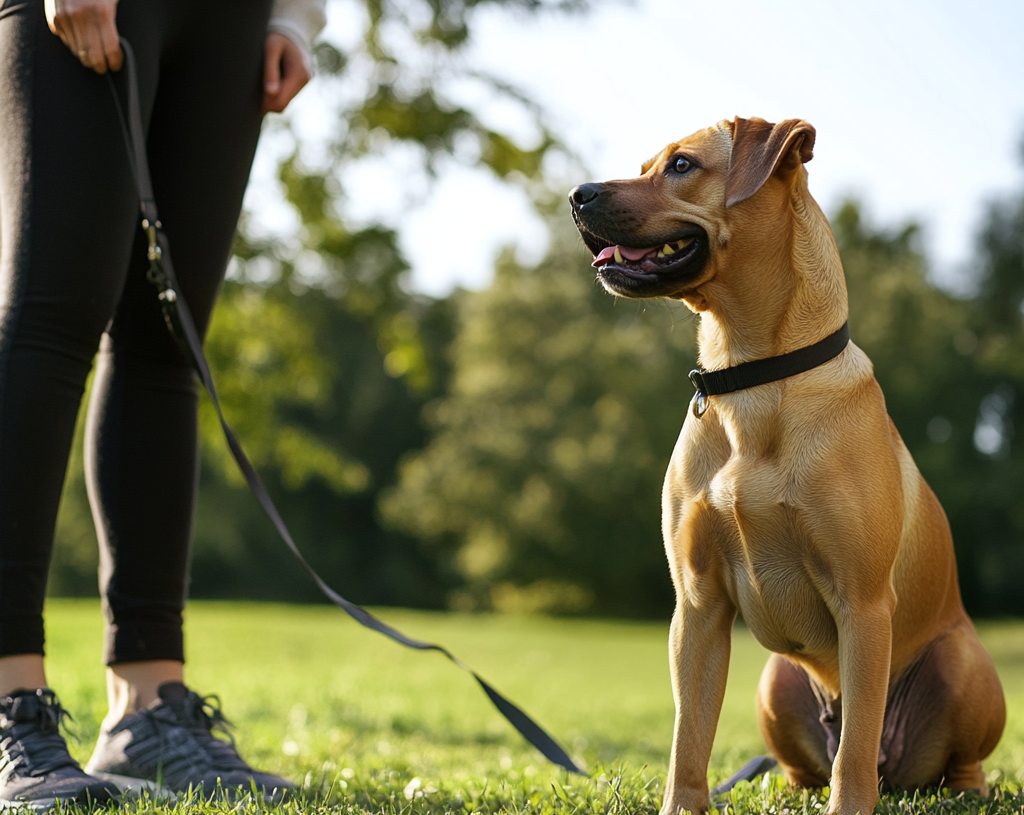Learn how to support your reactive dog through positive reinforcement, training, and environment management. Discover key strategies for improving behavior and strengthening your bond.
How to Support Your Reactive Dog: Effective Strategies for Training and Care
If you have a reactive dog, you know how challenging it can be to manage their behavior. Whether your dog is fearful, aggressive, or overly excitable, supporting a reactive dog requires patience, understanding, and consistency. In this comprehensive guide, we’ll explore effective methods to help your dog feel more secure, improve their behavior, and build a stronger bond between you and your pet.

Table of Contents
- What Is a Reactive Dog?
- Understanding the Causes of Reactivity in Dogs
- Signs of Reactivity: How to Identify a Reactive Dog
- Why Supporting Your Reactive Dog Is Important
- Strategies to Support Your Reactive Dog
- Positive Reinforcement Training
- Creating a Calm and Safe Environment
- Managing Triggers and Stimuli
- Exercise and Mental Stimulation
- Using Professional Help: When to Seek a Trainer or Behaviorist
- Common Mistakes to Avoid When Supporting Your Reactive Dog
- How Long Does It Take to See Results with a Reactive Dog?
- Conclusion
What Is a Reactive Dog?
A reactive dog is one that overreacts to certain stimuli in its environment, such as other dogs, people, loud noises, or specific objects. Reactivity can manifest in various ways, from barking and lunging to growling and snapping. While not all reactive dogs are aggressive, their heightened response often stems from fear, anxiety, or frustration.
Why Do Some Dogs Become Reactive?
Understanding why some dogs are reactive is crucial for supporting their needs. Reactive behavior often develops as a result of one or more of the following factors:
- Fear-based reactions: Dogs that have had negative experiences with certain stimuli may become fearful, leading them to react aggressively or defensively.
- Lack of socialization: Dogs that were not properly socialized during their early developmental stages might not know how to handle new situations, leading to fear and reactivity.
- Territorial behavior: Some dogs are naturally more territorial and may react to the presence of strangers or other dogs.
- Health issues: Pain or discomfort from an underlying medical issue can cause irritability and reactiveness.
Signs of Reactivity: How to Identify a Reactive Dog
Recognizing the signs of reactivity is the first step in supporting your dog. Some common signs include:
- Barking excessively at other dogs, people, or stimuli
- Lunging or pulling on the leash towards triggers
- Growling or snapping in certain situations
- Raised hackles or stiff body posture when encountering a trigger
- Pacing or panting excessively in stressful situations
- Whining or trembling when exposed to certain stimuli
Why Supporting Your Reactive Dog Is Important
Supporting your reactive dog is crucial for their well-being, as well as for your relationship with them. Left unchecked, reactivity can lead to more serious behavioral problems or worsen existing anxiety or aggression. By supporting your dog through proper training and management, you can:
- Reduce stress and anxiety for both you and your dog
- Build a more positive and trusting relationship
- Improve your dog’s quality of life by teaching them how to handle their emotions
- Increase the likelihood of successful interactions with other dogs and people
Strategies to Support Your Reactive Dog
Positive Reinforcement Training
One of the most effective ways to support your reactive dog is through positive reinforcement training. This method encourages desirable behaviors by rewarding your dog for calm responses to triggers. It’s important to use treats, praise, or toys to reinforce good behavior consistently.
Steps for Positive Reinforcement:
- Identify your dog’s triggers (e.g., other dogs, people, vehicles).
- Start training in a controlled environment with minimal distractions.
- Gradually expose your dog to these triggers at a distance where they don’t react.
- Reward your dog with treats and praise when they remain calm.
- Gradually decrease the distance to the trigger as your dog becomes more comfortable.
Positive reinforcement helps your dog associate their triggers with something positive, rather than reacting out of fear or frustration.
Creating a Calm and Safe Environment
A stable, predictable environment can help reduce your dog’s reactivity. By managing their surroundings, you can create a safe space where they feel more in control. This includes:
- Safe Zones: Designate a quiet area in your home where your dog can retreat to when feeling overwhelmed.
- Routine: A consistent routine with regular feeding, walking, and playtimes can help your dog feel more secure.
- Desensitization: Gradual exposure to triggers at a low intensity can help desensitize your dog, allowing them to learn that these things are not threats.
Managing Triggers and Stimuli
Understanding your dog’s triggers and how to manage them is a key part of supporting a reactive dog. You can reduce reactivity by:
- Avoiding triggering situations when possible
- Redirecting their attention with treats or toys when they start to react
- Using a leash or harness to maintain control during walks
- Creating distance between your dog and their trigger to avoid a reactive outburst
By managing the stimuli that cause your dog to react, you can help reduce their anxiety and improve their ability to cope with challenging situations.
Exercise and Mental Stimulation
Physical exercise and mental stimulation are vital for a reactive dog. Regular exercise can help reduce excess energy that might contribute to reactivity. Activities like long walks, running, or playing fetch can help alleviate pent-up frustration.
Additionally, providing mental stimulation can tire your dog out and reduce stress. Puzzle toys, obedience training, and interactive games are great ways to challenge your dog mentally.
Using Professional Help: When to Seek a Trainer or Behaviorist
If your dog’s reactivity is severe or persistent, seeking professional help may be necessary. A certified dog trainer or animal behaviorist can assess your dog’s behavior and create a tailored plan to address their needs. They can also teach you how to manage your dog’s reactivity in a way that’s safe and effective.
Common Mistakes to Avoid When Supporting Your Reactive Dog
While supporting a reactive dog, there are several common mistakes you should avoid:
- Punishing the behavior: Punishing a dog for being reactive can increase anxiety and worsen the behavior. Focus on positive reinforcement instead.
- Rushing the process: It takes time for reactive dogs to learn to cope with their triggers. Be patient and consistent with training.
- Overexposing the dog to triggers: Gradual desensitization is important, but overwhelming your dog with too much exposure at once can lead to setbacks.
- Inconsistent handling: Reactivity is best addressed with consistent management and training. Being inconsistent with rules and boundaries can confuse your dog.
How Long Does It Take to See Results with a Reactive Dog?
The timeline for seeing improvements with a reactive dog varies depending on several factors, including the severity of the reactivity, the age of the dog, and how consistently you implement training. With dedication, you may start to see improvements within a few weeks to a few months. However, more serious cases may require longer-term commitment and professional help.
Conclusion
Supporting a reactive dog is a journey that requires patience, understanding, and consistent effort. By using positive reinforcement, creating a calm environment, and properly managing triggers, you can help your dog become more confident and less reactive. It’s essential to remember that reactivity is not a behavior that can be “fixed” overnight, but with the right approach, you can help your dog feel more secure and improve their overall well-being.
For more pets-related articles, click here https://ledstk.com/category/pets/ and for recipe lovers, see here sotastyrecipe.com
